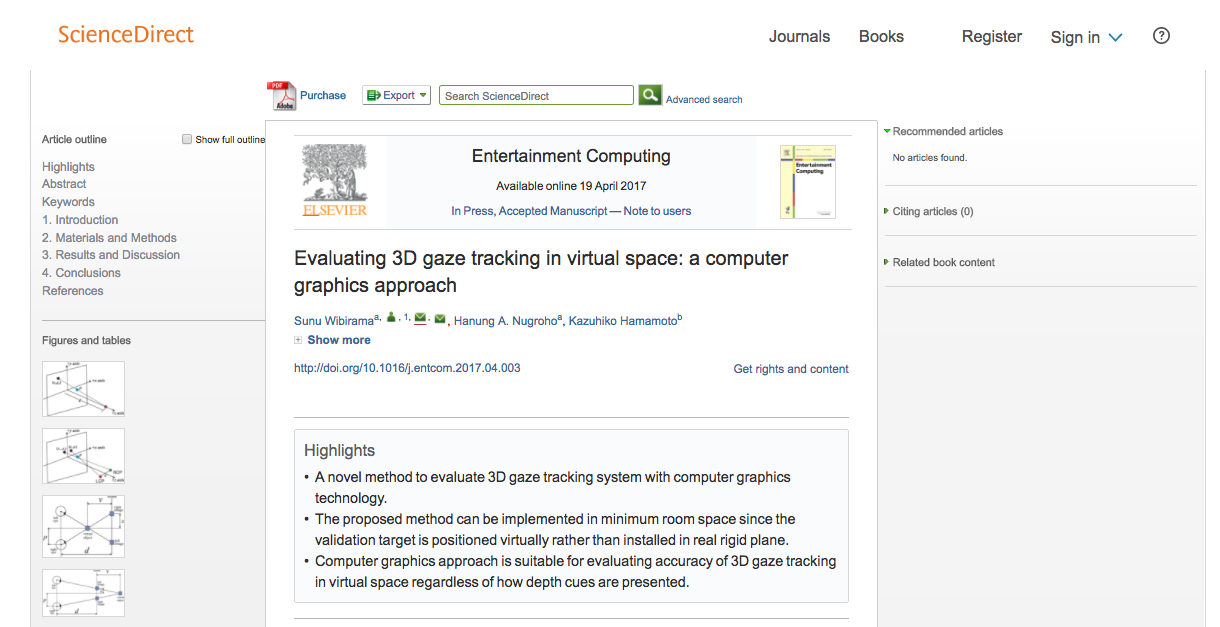Dear readers and colleagues,
Now you can read our article as “in press, accepted manuscript” version. Please note that future final article maybe slightly different due to copy-editing process.
Update : Now you can download the PDF file for free until June 17, 2017. Please follow this link :
Elsevier author’s link: https://authors.elsevier.com/a/1Uyi26gYiZaJk5
Mirror (‘accepted manuscript’ version): http://ugm.id/swb2017
Detail of article:
S. Wibirama, H.A. Nugroho, K. Hamamoto, “Evaluating 3D Gaze Tracking in Virtual Space: A Computer Graphics Approach,” Entertainment Computing, 2017. (accepted for publication, in press).
DOI: http://doi.org/10.1016/j.entcom.2017.04.003.
Abstract :
Increasing usage of stereoscopic 3D technology in virtual reality, video games, entertainment, and visualization has risen concern on development of gaze-based interaction. To develop intuitive and accurate gaze-based interaction, estimation of 3D gaze in virtual space should be validated experimentally. 3D gaze tracking is generally performed in real space with rigid object as validation target. Thus, researchers in virtual reality are constrained on choosing appropriate evaluation method when 3D gaze tracking has to be performed in virtual space. To fill this research gap, we present design and development of a new evaluation method for 3D gaze tracking in virtual space. We have implemented computer graphics technology to develop virtual plane containing virtual 3D object as validation target. Experimental results show that the proposed evaluation method was able to support real experiment by proving the accuracy of our 3D gaze tracking system with average Euclidean error less than 1 cm (Mean=0.95 cm; S.D=0.55 cm) in 74 cm depth of workspace. Compared with evaluation method for 3D gaze tracking in real space, the proposed method even can be implemented when space of experiment room is limited by adjusting the distance of virtual plane programmatically.
Note from publisher:
Accepted manuscripts are Articles in Press that have been peer reviewed and accepted for publication by the Editorial Board of this publication. They have not yet been copy edited and/or formatted in the publication house style, and may not yet have the full ScienceDirect functionality, e.g., supplementary files may still need to be added, links to references may not resolve yet etc. The text could still change before final publication.
Although accepted manuscripts do not have all bibliographic details available yet, they can already be cited using the year of online publication and the DOI, as follows: author(s), article title, Publication (year), DOI. Please consult the journal’s reference style for the exact appearance of these elements, abbreviation of journal names and use of punctuation.
When the final article is assigned to volumes/issues of the Publication, the Article in Press version will be removed and the final version will appear in the associated published volumes/issues of the Publication. The date the article was first made available online will be carried over.
